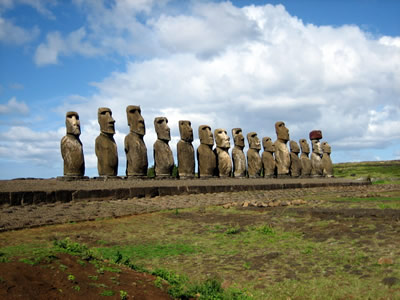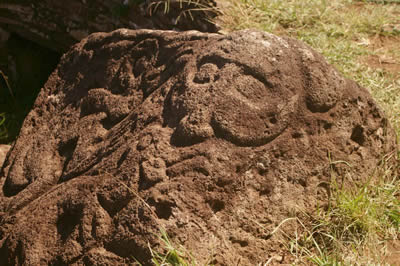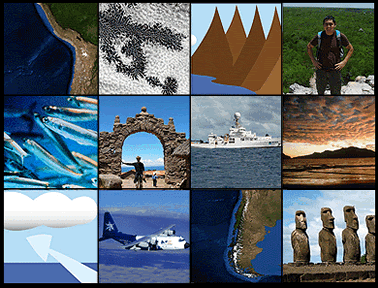Click on image for full size
Image Courtesy of the Wikipedia Commons
Easter Island
Easter Island, also known as Rapa Nui, is a volcanic island located in the Southeast Pacific Ocean. It was given the name "Easter Island" when a Dutch explorer visited the island on Easter Sunday in 1722. The island is a territory of Chile.
Easter Island is very isolated, located 3,600 km (2,237 miles) west of Chile and 3,200 km (2,000 miles) east of Tahiti. This small island (171 square km/66 square miles) is shaped like a triangle, with an extinct volcano at each corner. It contains high plateaus and craters surrounded by coastal bluffs. Ancient lava flows cover part of the island, creating a rough and broken surface. The only standing water found on the island is in the volcanic craters. Easter Island has a subtropical climate which is made cooler because an ocean current called the Humboldt current brings cool water to this part of the Pacific Ocean.
The island is famous for the many large stone statues created by the Rapa Nui people. The statues, called moai, were part of the ancestor worship practiced by the original inhabitants of the island. Over many years, they erected 887 moai out of volcanic rocks and placed most of them along the coastline of the island. The moai stand up to 20 meters (66 feet) tall! In the 1500s the Rapa Nui people shifted from creating moai to creating petroglyphs of the bird-man cult. In the late 1700s, the Rapa Nui people experienced a period of warfare between different groups on the island. Many of the moai fell over as a result of these wars. In the late 1800s, the Rapa Nui population was almost completely wiped out when slave traders from Peru raided the island. A small percentage of the Rapa Nui population survived the slave raids and exposure to European diseases. Approximately 2,300 Rapa Nui people live on Easter Island today.
Chile designated 40 percent of the island as a national park in 1935, and in 1996 UNESCO designated the island a World Heritage Site. Tourism makes up the main economic activity on Easter Island today.












